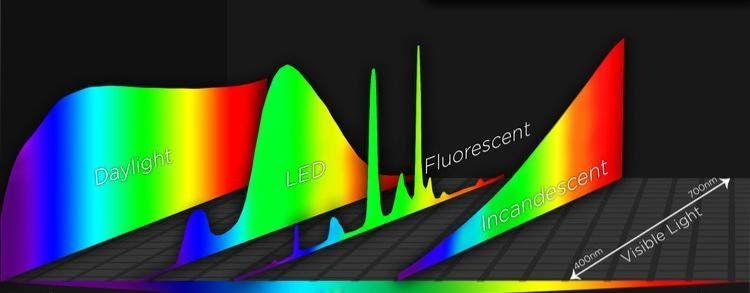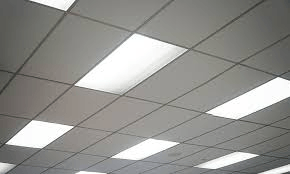Upgrade Now: Don’t Use Those Old Fluorescent Tubes
Many of the discussions about LEDs eventually come back to energy and cost savings. Of course energy savings are important at the global level, but cost savings are likely what matter more to you as an individual on a monthly basis. But just how much cost savings are there between fluorescent tubes and their LED equivalents?
This brings to mind the sunk cost fallacy. In case you’re unfamiliar with the term, the idea is essentially this: sunk costs do, in fact, influence people's decisions, with people believing that investments (i.e., sunk costs) justify further expenditures. People demonstrate "a greater tendency to continue an endeavor once an investment in money, effort, or time has been made.” This is the sunk cost fallacy, and such behavior may be described as "throwing good money after bad,” while refusing to succumb to what may be described as "cutting one's losses.”
Often facilities with a large number of fluorescent tube light fixtures have sunk a decent amount of money into replacement tubes. After all, tubes begin to flicker, hum, and get dimmer with time. Better to have a stock of replacements on hand than purchase individual tubes as each one needs to be replaced. After all, buying in bulk is often a good way to save money up front. Have you found yourself advocating for upgrading to LED fixtures while the number crunchers tell you it would be best to use what materials you already have? What if you could prove to them you could crunch numbers just as hard? That’s where we come in.
It’s very likely that in this situation, the accountants are succumbing to the sunk cost fallacy. Up-front investment in a stock of perfectly good fluorescent tubes seems to justify the cost of electricity that it will take to keep them running until the stock is depleted and a different, more energy efficient, solution can be considered. On the surface it sounds good. But dig in a little and you’ll find that the more quickly your facility switches to LED tubes and away from fluorescents, the better. You’ll start seeing energy cost savings from the first day of switching to LEDs from fluorescent tubes. But how long would it take to pay for the LED upgrade while also covering the cost of the unused stock of replacement fluorescents?
To get to that answer, we’ll have to go through a few different steps and consider a few different variables. We’ll make some assumptions as well. Obviously your specific situation may differ, but swap out my figures for yours and you’ll get a good sense of how long it will take you to recoup the cost of an LED tube upgrade.
In the example below we assume you have 5 cases of T8 fluorescent tubes in stock. The cost comes from a sample of a handful of different retailers online all selling the same product.
| Item | Number | Cost |
|---|---|---|
| Individual T8 | 1 | $4.09 |
| Case | 30 | $122.70 |
| Cases in stock | 5 | $613.50 |
To figure out the cost of your LED upgrade, we’ll use the cost of typical T8 tubes that come in cases of 10. If you purchase the 40-count case, the cost per tube will be lower, but these numbers will work to get an idea of what to expect.
Let’s assume you want to replace 250 tubes throughout your facility
| Individual LED T8 | 1 | $6.00 |
| LED T8 Case | 10 | $59.99 |
| Number to Replace | 250 | $1499.75 |
We’re also going to have to determine your energy savings in kilowatt hours (kWh) in order to arrive at our final numbers. To do this we’ll assume you’re using a 32W fluorescent tube and replacing it with an 18W LED. The wattage difference per tube is simply 32 - 18, or 12 watts saved.
| # Tubes | 250 |
| W Saved/Tube | 12 |
| kW Conversion | 1000 |
| Savings/Tube (kW) | 3.00 |
So now we have kW savings per tube for 250 tubes replaced with LEDs. Let’s figure out how many kWh per year you’ll save with these figures. Let’s assume you’re running your lights 24 hours per day each year.
| Yearly Hours | 8,760 |
| kW Saved | 3 |
| kWh Saved/Year | 26,280 |
With these figures, you’re saving about 26,000 kWh per year. If we consider that you could be paying somewhere in the neighborhood of $0.11 per kWh (a good national average), you’re looking at nearly $2,900 in annual energy savings.
| kWh Saved/Year | 26,280 |
| kWh Cost | $0.11 |
| Annual Energy Savings | $2,890.80 |
Okay so that’s great. By switching to LED, you stand to save this much over the course of a year. But you still had to spend the money on the upgrade. So how long will it take you to recoup that cost?
| Upgrade Cost | $1,499.75 |
| Energy Savings | $2,890.80 |
| Months per Year | 12 |
| Months for Payback | 6.23 |
You can expect to recoup the cost of your upgrade alone in 6.23 months. But what about all those fluorescent bulbs just collecting dust in the closet? Bulbs you paid for and are never going to use? That’s gotta factor in right? Okay. Let’s look at that too.
| LED Upgrade Cost | $1,499.75 |
| Cost of Inventory | $613.50 |
| Cost to Recoup | $2,113.25 |
| Energy Savings | $2,890.80 |
| Months per Year | 12 |
| Months to Recoup | 8.77 |
The total cost you need to recoup is the cost of the upgrade plus your inventory. In this case, a little over $2,100. Based on the energy savings you stand to see thanks to your LED upgrade, you can recoup the entire cost of the upgrade and your unused stock of fluorescents in under 9 months.
As mentioned before, your actual details will vary. But it is much more cost effective to make the up-front investment now and stop using those old fluorescents. Don’t fall victim to the sunk cost fallacy. It’s called a fallacy for a reason!
Invest in an LED upgrade today. Contact us for a free consultation.





